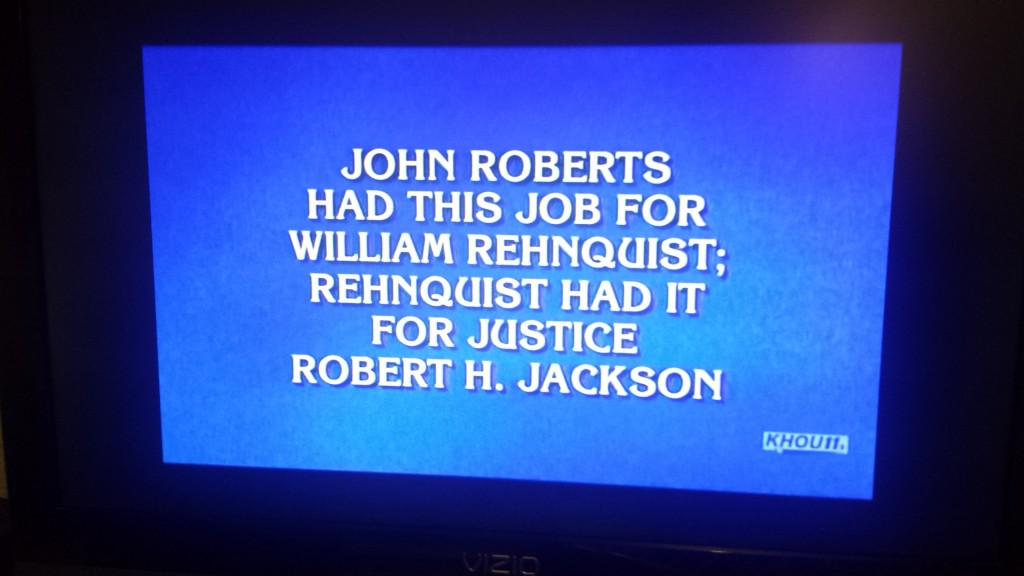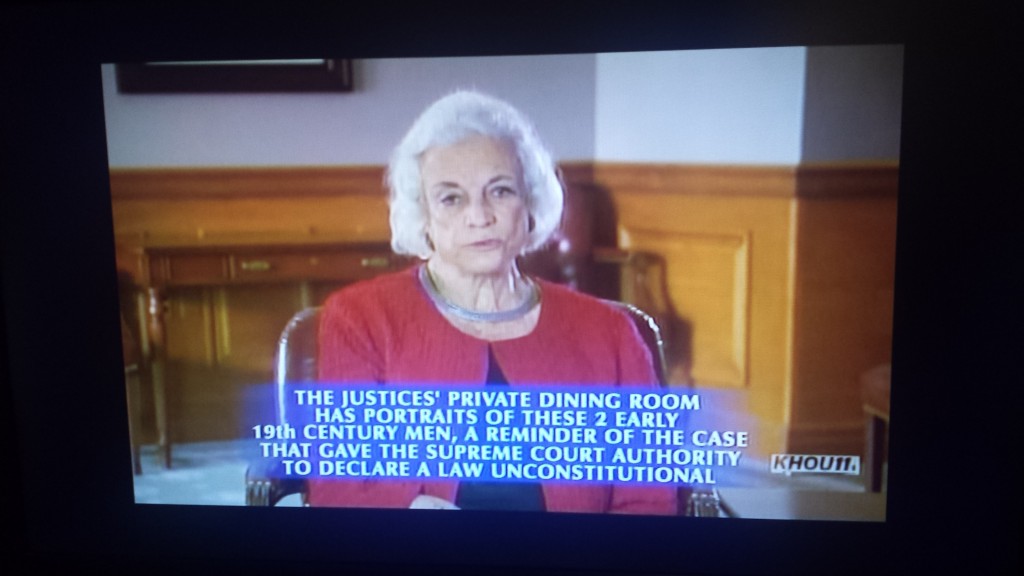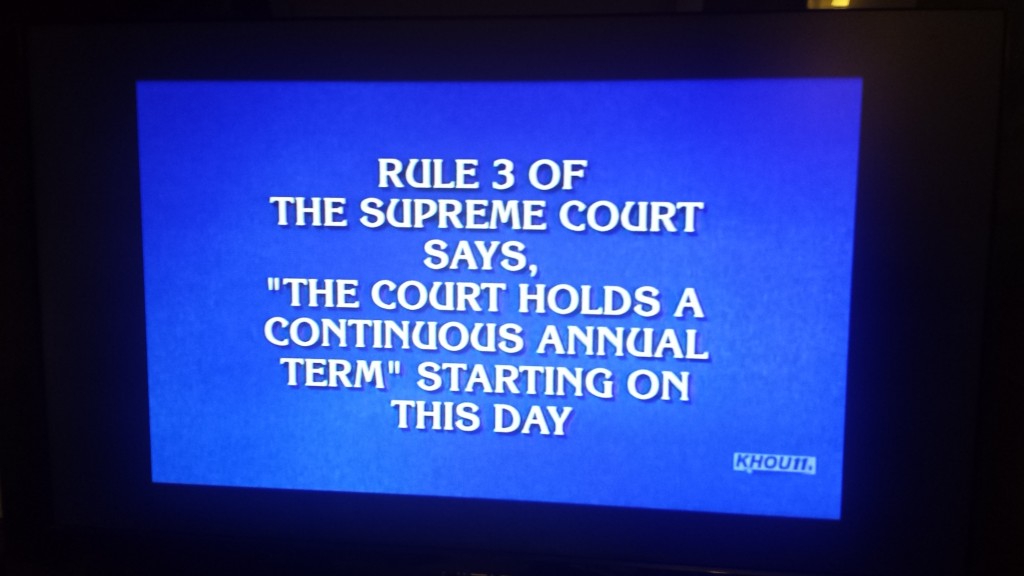During a wide-ranging interview in Miami on Wednesday, the President commented on DAPA, DACA, and Judge Hanen’s order.
First, in response to a question about DAPA, the President alluded to forum shopping, by explaining “Republican governors . . . found a district court judge.”
Now, unfortunately, a number of Republican governors chose to sue. They found a district court judge who has enjoined — meaning stopped — us going forward with this program. But that’s just the first part of the process. This is just one federal judge. We have appealed it very aggressively. We’re going to be as aggressive as we can because not only do we know that the law is on our side, but history is also on our side.’
But has this appeal been aggressive? Despite their empty threat they DOJ will appeal to the 5th Circuit if Judge Hanen didn’t rule by Wednesday, as of today, no papers have been filed in New Orleans. Is this aggressive?
In response to a question about how long the appeal will take, the President explained it will take “a couple of months.”
MR. DIAZ-BALART: How long will it take? Because a lot of people are asking. They said, we were 24 hours away from registering for the expanded DACA and just months from DAPA. This happens 12 hours before. What’s going to happen now? How long is it going to take? And, again, a lot of the questions are, was the President caught by surprise? And why is it taking so long? This is what we’re getting, Mr. President.
THE PRESIDENT: What I’m saying is, is that of course we weren’t surprised. I’ve got a bunch of lawyers, we saw the judge who was rendering the opinion. The fact that we weren’t surprised doesn’t mean we can stop the judge from rendering an opinion. It means that we then go forward in the appeal process. That’s how the legal system works.
And we have asked –- first and foremost, we have asked for a stay. What a stay means, by the way, for the non-lawyers, is simply that whatever the judge thinks, it shouldn’t stop us from going ahead and implementing. The first step is to go before that same judge and say, judge, what you said is wrong, rethink it. He may not agree with that.
The next step is to go to a higher court, the Fifth Circuit. That will take a couple of months for us to file that and argue that before the Fifth Circuit. We expect to win in the Fifth Circuit, and if we don’t, then we’ll take it up from there.
So at each stage, we are confident that we’ve got the better argument. As I said before, what I’ve done is no different than what previous Presidents have done. In the meantime, what I can do is make sure –-
He later repeated, again, that the process would take “months.”
So we’re going to be in a position I think of going through the legal process over the next several months.
Based on this comment, it doesn’t look like DOJ will file for an emergency stay with the 5th Circuit. A process that takes “a couple of months” will likely be an expedited appeal. But the panel opinion could take 6 months from start to finish. Then, en banc if it goes against the Administration. Then a year for certiorari. As I noted in National Review, the courts can effectively run out the clock on the Obama Administration.
One of the President’s most striking remarks concern the efforts of the House of Representatives to use the power of the purse to stop his executive action on immigration. While I am entirely ambivalent about the politicking around the funding of DHS and government shutdowns, the President explained that he would veto any effort by Congress to cabin his executive powers through the appropriations clause.
So in the short term, if Mr. McConnell, the leader of the Senate, and the Speaker of the House, John Boehner, want to have a vote on whether what I’m doing is legal or not, they can have that vote. I will veto that vote, because I’m absolutely confident that what we’re doing is the right thing to do. (Applause.) And in the meantime, we’re going to continue to pursue all legal avenues to make sure that we have a country in which we are respecting not only the law, because we’re a nation of laws, but we’re also respecting the fact that we’re a nation of immigrants.
In Part II of my series, I spin a counterfactual where President Truman vetoed the “Steel Mill Restoration Act of 1952,” which defunded the President’s efforts to seize any steel mills. I use this as a scary example of how a President could use the veto power to fight back against Congress attempting to reclaim its legislative authority. Yet, this actually happened. In the past, the President threatened to veto a bill that would have grandfathered plans cancelled under Obamacare–then accomplished through executive action the exact goal. We are living in a surreal time, where the President describes such behavior as fitting a “nation of laws.”
The host asked the President in several different manners why he didn’t go further with DAPA. The President replied, as he did before DACA, and before DAPA, that he was already stretching his powers to their furthest extent. (Apparently, after each new program, the powers expanded).
The bottom line is, José, that I’m using all of the legal power vested in me in order to solve this problem. And one of the things about living in a democracy is that we have separation of powers — we have Congress, we have the judicial branch — and right now, we’ve got some disagreements with some members of Congress and some members of the judiciary in terms of what should be done.
The President considers the current constitutional crisis a mere “disagreement” between Congress and the judiciary.
Once again, he says he expanded his powers “as far as we can” (He said that many times before).
What we’ve done is we’ve expanded my authorities under executive action and prosecutorial discretion as far as we can legally under the existing statute, the existing law. And so now the question is, how can we get a law passed.
He adds that what makes him confident is “prosecutorial discretion.”
THE PRESIDENT: Here’s the thing. I was always very clear about this, even when I made the first announcement about the executive actions. The reason I’m confident about our legal position in what we did with DACA, which was already in place since 2012, what we’re now proposing in terms of expanding DACA, and also for the parents of those who qualified for DACA — the reason I’m confident is that we could take those steps under my powers of prosecutorial discretion.
If, in fact, we were completely just rewriting the immigration laws, then actually the other side would have a case, because we can’t violate statutes. We can’t violate laws that are already in place. What we can do is make choices to implement those laws. That’s what we’ve done with DACA and that’s what we’ve proposed with the expansion of DACA and DAPA.
In order for us to do most of the work that Boris refers to in terms of expanding opportunities, for example, to say to any young person who has got an advanced degree in math and science and engineering, which we know we’re going to need, even as we try to get more and more young Americans to go into those fields –- in order for us to do that, we’re going to need a congressional law to be passed. I don’t have all the authorities that are necessary in order to get some of those things done.
In a fascinating colloquy, the host explains why George H.W. Bush’s 1990 Family Fairness program differed from DAPA. Putting aside the fact that only 50,000 people applied (not the 1.5 million estimated), the key difference is that it served as a temporary bridge during the 9 months between when the Senate and House passed versions of the bill.
MR. DIAZ-BALART: The numbers are unprecedented.
THE PRESIDENT: Well, the numbers are unprecedented only relatively speaking. I mean, if you look at what George H.W. Bush did, he, proportionally to what was then the immigrant population, was very aggressive in expanding. The difference is, is that Democrats didn’t challenge what he did for largely political reasons.
MR. DIAZ-BALART: And there was a bill already underway.
Focus very carefully on the President’s response. He quickly acknowledges that there was a bill pending– a fact his OLC neglected to discuss.
THE PRESIDENT: Well, there was a bill underway…
The rest of the sentence seems to be a riff on his theme–when Congress doesn’t solve a problem, then I will.
… but in some ways, you could make an argument that since a bill had passed that didn’t solve that problem, Congress had been very direct in saying we don’t want to solve that problem.
His next sentence is confusing. Is “He” referring to George H.W. Bush? That’s what I thought till we got to the last part about DHS which didn’t exist in 1990. Is he speaking about his Secretary?
And he went ahead and did it anyway, because it’s in his authority to implement, using prosecutorial discretion, the limited resources of Department of Homeland Security.
It doesn’t really make sense. But I think there is a semblance of an idea there.



